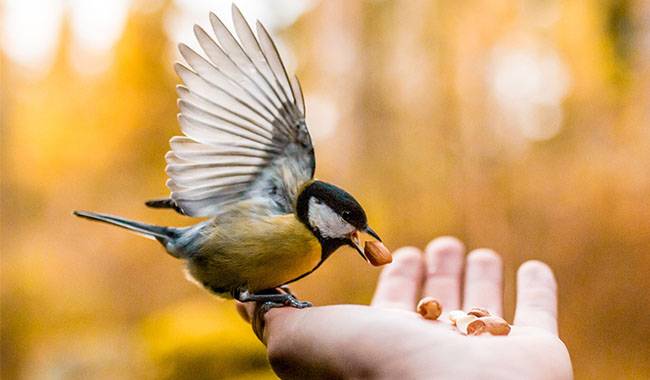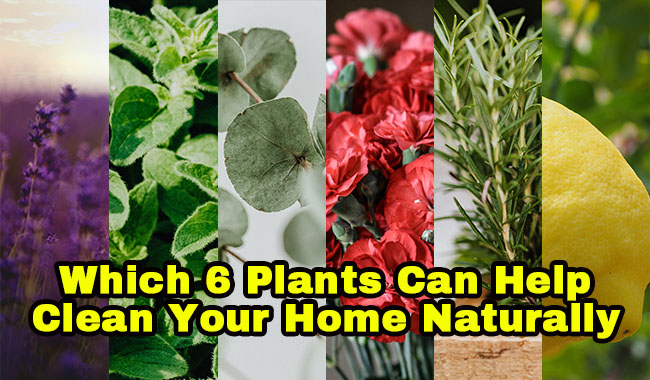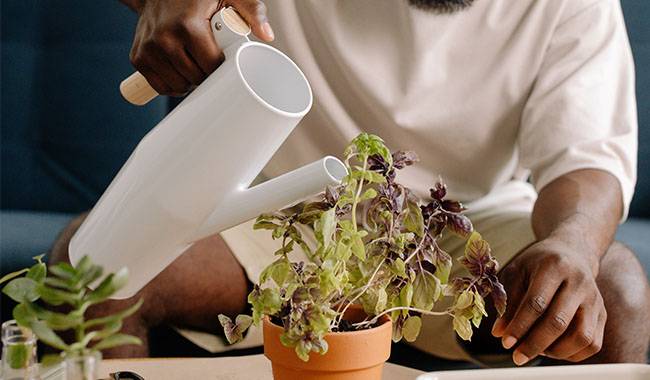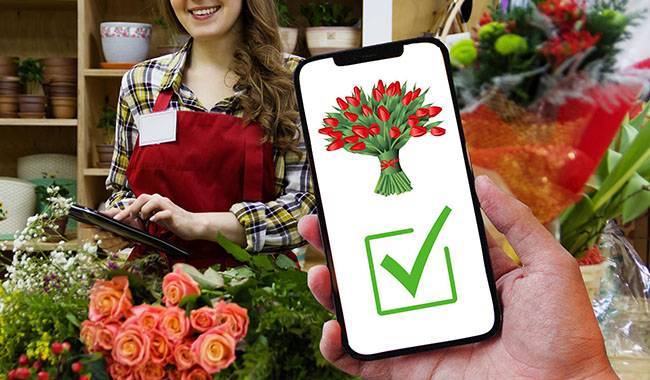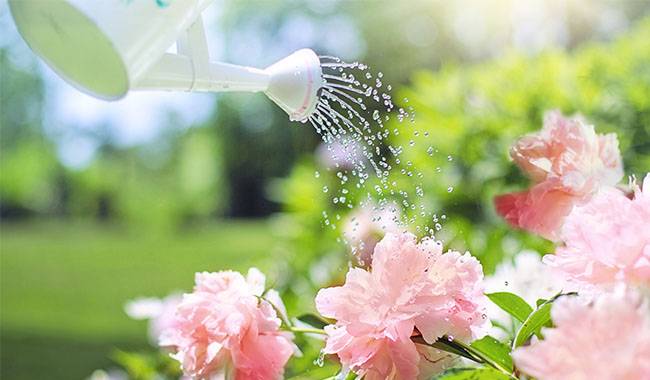
With any houseplant, proper or improper care is almost always related to the quality of watering. Finding the right balance, being sensitive to the process of wetting the soil, not going to extremes, and ‘listening’ to the plant are the main rules for proper watering. But this is not the only one. It is not easy to strike a balance between watering less and watering more. Some basic rules for watering houseplants will ensure that you don’t make any major mistakes in this important procedure. Let’s take a closer look at them. You will learn 10 Watering Rules for Indoor Plants in the ThumbGarden article.
Quality irrigation starts with water quality
Don’t water your houseplants with untested water, especially undrained tap water, cold or hot water. The water must be at the same temperature as the air in the room. Water must be allowed to stand for at least 2-3 days before watering.
Melted rainwater (provided the environment is favourable) or filtered “drinking water” is ideal. It is best not to water house plants with boiling water (with a few exceptions) and mineralisation is strictly forbidden. Some plants may require distilled water.
Watering should only be done when necessary
Checking the dryness of the substrate and controlling the rate at which plants consume water at different stages of development will help to avoid major watering mistakes. Whatever the standard guidelines are, you can only judge watering requirements from the soil.
Before you pick up the watering can, you should check whether the plant needs watering.
- Check the water content of the substrate top surface and 0.4-0.8 inches (1-2 cm depth) by gently rubbing the soil with your fingers.
- Compare the pots to see if they are lighter (there is a big difference in the weight of the pots before and after watering).
Do not water each one at once!
Allocating one day of the week to watering and watering all plants indiscriminately at the same time is the biggest mistake of all. This is certainly more convenient. But potted plants are all different and should also be watered at different times.
Houseplants can be grouped according to their degree of water-loving (water-loving, moderately water-loving or drought-tolerant) or even according to their origin (desert, subtropical, tropical). However, it is best to check individual recommendations for varieties and species and to set a schedule for each plant.
A good strategy is to keep simple records or tables or to use labels and signs on pots with information about
- How often and how much the plant should be watered at different stages of development.
- How long you can keep the water in the tray.
- what the water should look like.
Always use special ‘markers’ to highlight plants that have been watered by tray, by wicking, by pouring water into a leaf funnel, or by soaking.
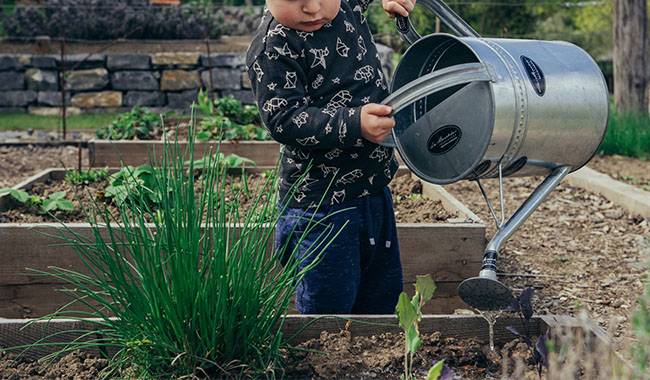
Do not accept extremes
Drought and over-watering are the two poles in the definition of improper watering. And both are considered unacceptable. The top 1 inches (2.5 cm) of substrate of any houseplant should not be left for more than a few minutes after watering.
Even with moisture-loving species you should let the top layer of substrate dry out until the next watering. And for drought- and water-tolerant plants that need little watering, do not allow the substrate at the bottom of the pot to dry out completely (except for bulbs and cacti that overwinter completely dry, and for cacti that can tolerate drying).
Emergencies, including going outside, happen to all flower growers. However, you cannot expect healthy and beautiful plants if you neglect regular care and tolerate constant over-watering or underwater watering.
When watering houseplants, one rule always holds true: a small amount of underwater watering is always better than overwatering.
The frequency of watering is as important as the quantity
Watering can be frequent (every day or every other day), moderate or moderate (every 2-3 days) and infrequent (no more than once a week). But in addition to frequency, the quality of the soaking soil is also important for all houseplants.
The extent to which the substrate will be saturated with water – the amount of watering – is determined by a few inches of topsoil. Over-watering or over-generous watering will immediately make the soil very wet, a few minutes later wet and only after a while – wet.
With standard moderate watering the soil is not wet: it should become evenly moist after only a few minutes of soaking. Light watering, on the other hand, is the kind where the soil goes from being a little damp to becoming moist immediately.
Determine the degree of moisture by touch.
- Moist soil “drips” and drops of water appear when the substrate is squeezed.
- Wet soil is easily crumbled and sticky.
- Wet will curl up and crumple, but will not stick to your hands.
- Dry – it will crumble when squeezed.
Any watering is only considered correct if the amount of water allows you to soak the whole soil evenly to the lowest level – so that some water does not emerge from the drainage holes immediately, but some time afterwards.
Too much dripping or no water in the pot indicates water tightness or a substrate that does not hold water, again undesirable.
For good watering, it is best to divide the water into several pours and watch the soil soak, giving the water a chance to be evenly distributed rather than all at once.
Dispersing the spray and being careful is the best irrigation strategy.
Do not water in one place with a strong jet of water as this will compact and erode the substrate. Watering is best done using a handy watering can with a diffuser nozzle designed specifically for houseplants. Direct water around the pot, in a low spot, avoiding the formation of holes and slowly, without ‘puddles’ of water pooling on the soil.
Special care should be taken with care: not all houseplants are sensitive to moisture, but none will thank you for their decorative qualities if you are not careful with watering. Water should not be directed towards the trunk and under the roots, over the root necks and growing points, soaking and splashing onto the leaves.
If the soil shows signs of compaction, slumping, or poor substrate permeability, it should be loosened immediately. If the soil is heavily contaminated or mouldy, – replace the topsoil.
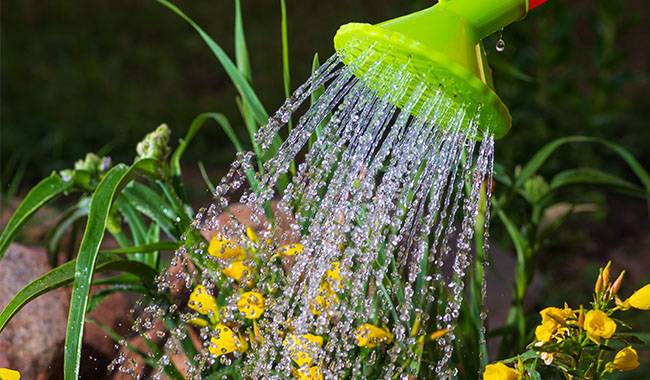
Watering should not take place in the middle of the day
In the warm season, it is best to water houseplants in the early morning or late evening, in the cold season only in the early morning. Watering should not be done in direct sunlight during the day.
Water should not stagnate in the drip tray.
Even for plants that need to be soaked or watered through trays, limit the amount of time the water remains in the outside container. Using the classic top watering, any water left in the tray should be drained after 5-8 minutes.
Even 10 minutes of standing water at the bottom of the substrate and over-saturation of the drainage system can lead to the start of negative processes in rot-sensitive species.
Correcting irrigation behaviour at the slightest change
It is rarely possible to water with a steady frequency. If the weather is hot, heating is more intense, humidity drops, and plants are growing vigorously, watering needs to be increased. But not in terms of quantity, but in terms of frequency, to compensate for all factors.
Always remember that watering times are influenced by numerous other factors.
- the size of the pot (the larger the container, the less frequent the watering)
- Potting material (plants in ceramic containers should be watered more often)
- the size and density of the foliage
- The location in the room and the frequency of ventilation.
- The level of humidity in the air.
- The extent to which the substrate is filled with roots.
- airflow, etc.
Use of intelligent watering tools
Today, budget and high-end systems have been developed for houseplants to avoid the hassle of watering. Simple and affordable indicators, automatic irrigation bottles, double-walled containers, and hydroponic units will keep watering to a minimum.
Even a simple moisture indicator will save you from having to check the soil by hand so often. And if it’s hard to know if your plants need watering or if it’s best to wait, you should get such a clever helper.




